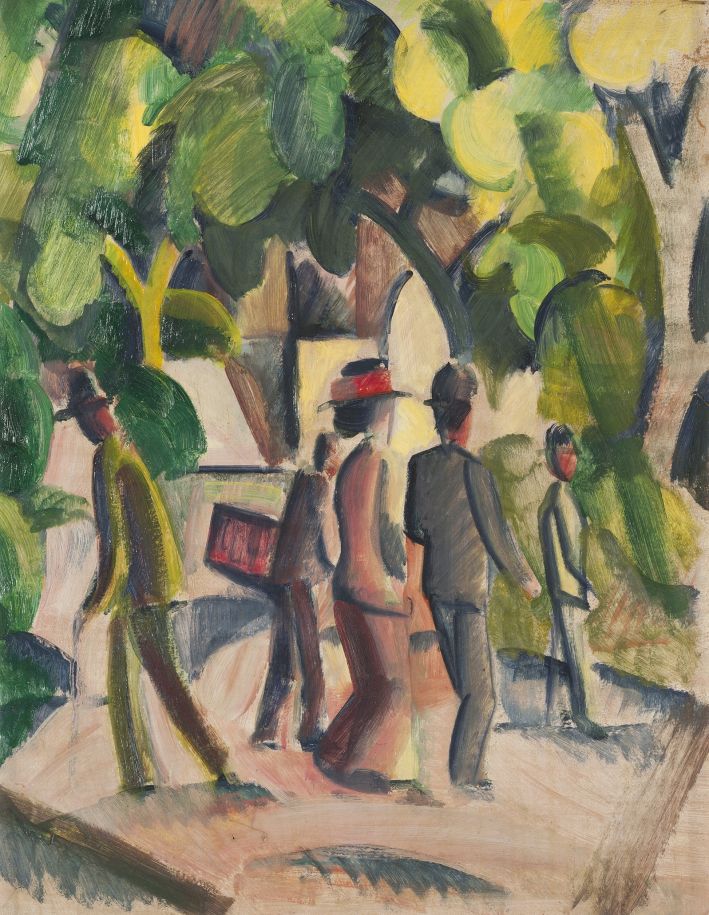
Foto: Carsten Gliese
August Macke (1887 – 1914)
August Macke belonged to the Blauer Reiter artists’ group founded by Wassily Kandinsky and Franz Marc in Munich in 1911. In October 1913 Macke moved to Lake Thun, which is probably where he painted the “Promenade in Brown and Green". Five people form the central point about which the chromatically nuanced canopy of leaves of the towering trees are grouped. Alongside the green and brown tones Macke deliberately uses accents of red color to structure the surface of the picture. In this painting the artist is not concerned with the outer appearance of the things, but with their “inner resonance.”
In April 1914 Macke undertook a legendary journey to Tunisin the company of Paul Klee and Louis Moilliet. There, by concentrating on watercolor, he managed to further intensify the luminous effect of his colors. Afterwards Macke travels to the Black Forest, where he explored his previously gained knowledge in a series entitled “Kandern” after the name of the town where his family was staying. Of the total of four watercolors, the composition in Neuss is the most systematically constructed one. The shapes are formed entirely of color and are only faintly reminiscent of objects. „Kandern IV“ is one of his last works, as Macke was killed in France only a few weeks after the outbreak of the First World War.